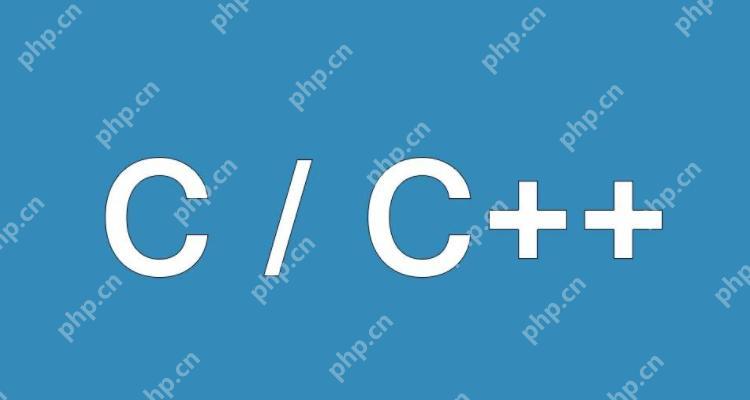实现c++++中的命令模式可以通过以下步骤实现:1.定义一个抽象的命令类,包含执行操作的纯虚函数;2.创建具体的命令类,实现该接口;3.使用命令模式实现遥控器功能,允许灵活扩展。命令模式将请求封装成对象,解耦调用和提供操作的对象,适用于需要高扩展性的场景,但需注意其复杂度和性能开销。

实现C++中的命令模式?这是一个有趣的问题!命令模式是一种行为设计模式,它将请求封装成对象,从而可以使用不同的请求、队列或日志请求来参数化其他对象。命令模式可以解耦调用操作的对象和提供操作的对象,让系统更加灵活和可扩展。
让我来带你深入了解一下如何在C++中实现这个模式,同时分享一些我在实际项目中使用命令模式的经验和踩过的坑。
在C++中实现命令模式,首先需要定义一个抽象的命令类,这个类通常包含一个执行操作的纯虚函数。然后,我们可以创建具体的命令类来实现这个接口。命令模式的核心在于将“请求”封装成对象,这样我们可以像处理普通对象一样处理这些请求,比如存储、传递、排队等。
立即学习“C++免费学习笔记(深入)”;
让我们从一个简单的例子开始,假设我们有一个遥控器,它可以控制不同的设备,比如灯和风扇。我们将使用命令模式来实现这个遥控器的功能。
#include <iostream>
#include <memory>
// 抽象命令类
class Command {
public:
virtual ~Command() = default;
virtual void execute() = 0;
};
// 具体命令类 - 打开灯
class LightOnCommand : public Command {
public:
void execute() override {
std::cout << "Turning on the light." << std::endl;
}
};
// 具体命令类 - 关闭灯
class LightOffCommand : public Command {
public:
void execute() override {
std::cout << "Turning off the light." << std::endl;
}
};
// 具体命令类 - 打开风扇
class FanOnCommand : public Command {
public:
void execute() override {
std::cout << "Turning on the fan." << std::endl;
}
};
// 具体命令类 - 关闭风扇
class FanOffCommand : public Command {
public:
void execute() override {
std::cout << "Turning off the fan." << std::endl;
}
};
// 遥控器类
class RemoteControl {
private:
std::unique_ptr<Command> onCommand;
std::unique_ptr<Command> offCommand;
public:
void setCommands(std::unique_ptr<Command> on, std::unique_ptr<Command> off) {
onCommand = std::move(on);
offCommand = std::move(off);
}
void pressOnButton() {
if (onCommand) {
onCommand->execute();
}
}
void pressOffButton() {
if (offCommand) {
offCommand->execute();
}
}
};
int main() {
RemoteControl remote;
remote.setCommands(std::make_unique<LightOnCommand>(), std::make_unique<LightOffCommand>());
remote.pressOnButton(); // 输出: Turning on the light.
remote.pressOffButton(); // 输出: Turning off the light.
remote.setCommands(std::make_unique<FanOnCommand>(), std::make_unique<FanOffCommand>());
remote.pressOnButton(); // 输出: Turning on the fan.
remote.pressOffButton(); // 输出: Turning off the fan.
return 0;
}这个例子展示了如何使用命令模式来实现一个简单的遥控器系统。通过这种方式,我们可以很容易地扩展遥控器的功能,只需添加新的命令类即可。
现在,让我们来谈谈命令模式的一些优点和缺点,以及我在实际项目中使用这个模式时遇到的一些问题。

在WINDOWS下,编译时的路径是WINDOWS安装目录。 ; 在命令行模式下,PHP.INI的查找路径可以用 -C 参数替代。 ; 该文件的语法非常简单。空白字符和用分号&ACUTE;;&ACUTE;开始的行被简单地忽略(就象你可能 ; 猜到的一样)。 章节标题(例如 : [FOO])也被简单地忽略,即使将来它们可能 ; 有某种的意义。 ; ;
 435
435

优点:
缺点:
踩坑点:
std::unique_ptr)来解决。在实际项目中,我曾经使用命令模式来实现一个复杂的图形编辑器。通过命令模式,我能够轻松地实现撤销和重做功能,同时也使得系统的扩展变得更加简单。例如,添加新的绘图工具只需要创建新的命令类,而不需要修改现有的代码。
总的来说,命令模式是一个非常有用的设计模式,特别是在需要解耦和扩展性的场景中。不过,在使用这个模式时,也需要仔细考虑其带来的复杂度和性能开销,确保它真正适合你的项目需求。
希望这些分享能对你有所帮助,如果你有任何其他问题或需要进一步的讨论,欢迎随时交流!
以上就是怎样实现C++中的命令模式?的详细内容,更多请关注php中文网其它相关文章!

每个人都需要一台速度更快、更稳定的 PC。随着时间的推移,垃圾文件、旧注册表数据和不必要的后台进程会占用资源并降低性能。幸运的是,许多工具可以让 Windows 保持平稳运行。

Copyright 2014-2025 https://www.php.cn/ All Rights Reserved | php.cn | 湘ICP备2023035733号